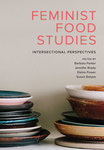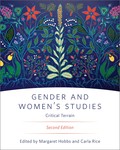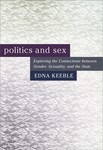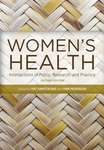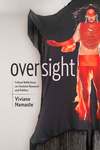We don’t actively support Internet Explorer
It appears that you are using Internet Explorer, which has been discontinued by Microsoft. Support has ended for versions older than 11, and as a result you may face security issues and other problems when using it.
We recommend upgrading to a newer browser such as Firefox, Google Chrome, or Edge for a much better experience across the web.
While this site may work with Explorer, we are not testing and verifying it, so you may run into some trouble or strange looking things.
Overview
How do we perceive ourselves and our bodies in relation to our physical, geographical, social, cultural, political, psychological, and spiritual environments? Body Studies in Canada uses intersectional methodological and theoretical frameworks to discuss the political and socio-historical discourses that shape body studies in Canadian society.
This edited volume delves into a variety of timely topics including postcolonial “othering” of the body; social discourses around healthy and un-healthy bodies; intersections of aging, gender, race, class, and size; the fitness industries’ promotion of the “ideal” body; the gendering of bodywork symbols and expressions in carceral environments; and self-awareness of “the body” in social and digital media.
In thirteen chapters, editor Valerie Zawilski brings together scholars from a wide variety of disciplines and expertise to provide an interdisciplinary perspective on how the body interacts reflexively with society. This collection is a foundational text for sociology of the body and body studies courses, as well as gender studies, political science, and health studies.
FEATURES
- provides a uniquely Canadian perspective on body studies and the surrounding historical and political issues, with a focus on decolonization, racialization, masculinities, engagement with critical weight scholarship, and immigration
- pedagogical features include section introductions, boxed inserts highlighting key concepts, learning objectives, questions for critical thinking, and a glossary
Table of Contents
Acknowledgements
Contributors
Introduction
Part I: Bodywork Narratives
Chapter 1: The Hidden Embodied Stories behind Diabetes as Racialized Health Disparities
Leslie Dawson
Chapter 2: (Re)Storying Indigenous Womanhood: Reclaiming Selfhood and Resisting Colonial Dismemberment
Tamara Bernard
Chapter 3: Gendered Status Hierarchies among US and Canadian Youth: Athletic Ability and Physical Attractiveness
Joseph H. Michalski
Chapter 4: Fat Reclamation and Identity Management in the Canadian Context
Heather Plyley and Annette Burfoot
Chapter 5: Women Moving into Later Life: Aging Bodies, Changing Identities
Nancy Mandell and Lois Kamenitz
Part II: Healthy Bodywork
Chapter 6: Bartering with Fate: Imagination, Health, and the Body
Margaret MacNeill and Debra Kriger
Chapter 7: “It Was Such Good Medicine for Me”: Contesting the Body Project of Yoga, Health, and Ideal Femininity
Judith Mintz
Chapter 8: Conceptualizing the Aging Body in Fitness Instructor Training Curricula
Kelsey Harvey and Meridith Griffin
Chapter 9: The Myth of Healthiness: Rethinking the Boundaries between Healthy Selves and Unhealthy Others in Drug Addiction Treatment
Ana M. Ning
Part III: Political Bodywork
Chapter 10: Power and the Body: Iranian Female Immigrants’ Perceptions and Experiences of Bodily Freedoms in Iran and Canada
Bahar Tajrobehkar
Chapter 11: Physical Activity, Bodywork, and the Construction of Masculinities in Canadian Men’s Federal Prisons
Mark Norman, Rosemary Ricciardelli, and James Gillett
Chapter 12: Caged Bodies: Gendered Responses to the Carceral Challenges of Detention during the G20 Summit in Toronto, June 26–28, 2010
Valerie Zawilski
Chapter 13: The Undignified Body: Excremental Assault in Canadian Nursing Homes
Donna Lynn Smith, Megan Aiken, Amy Gerlock, and John Church
Glossary
Index




